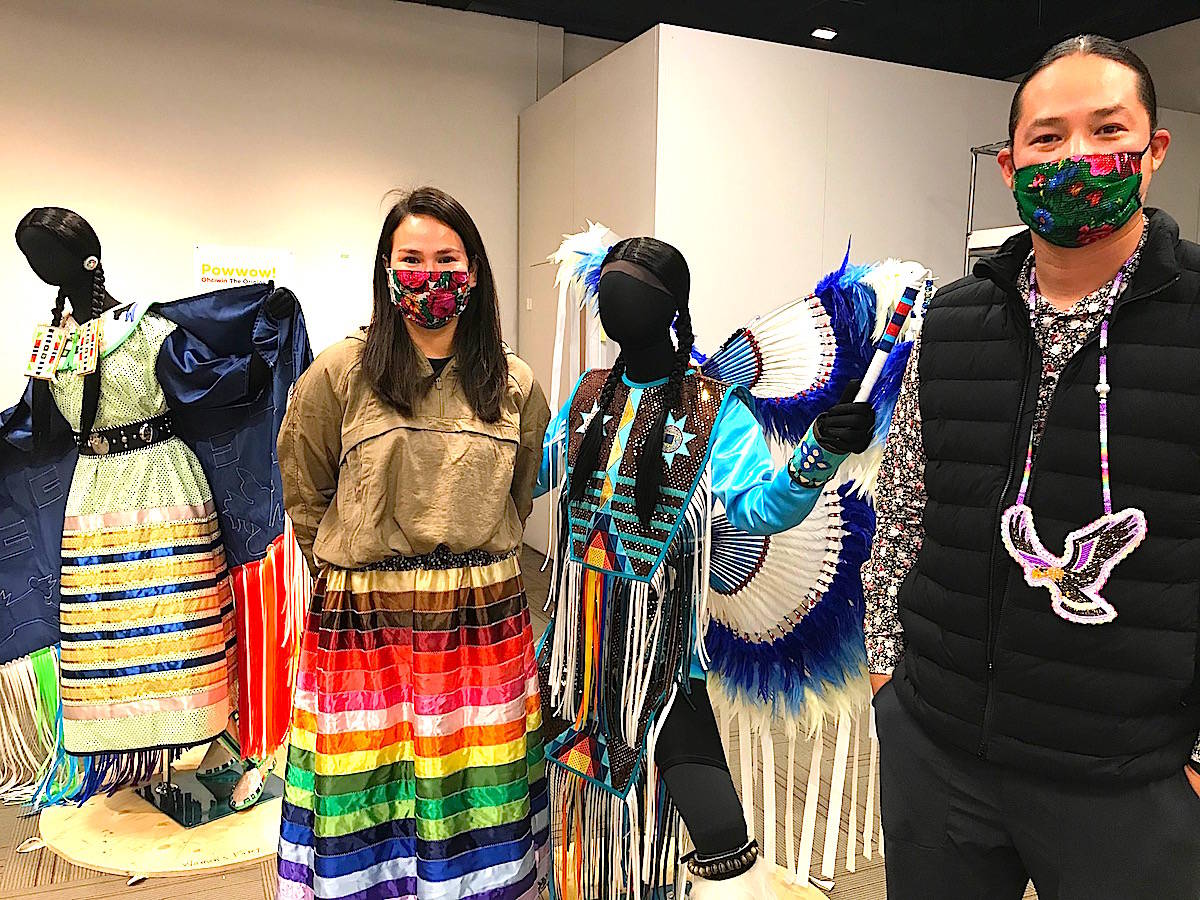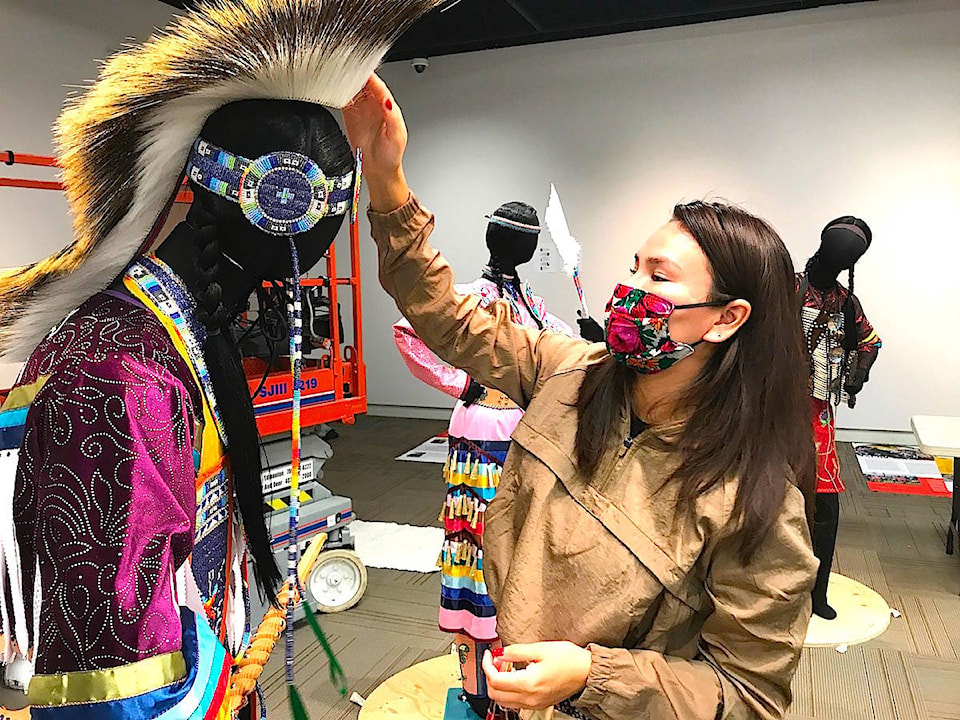Powwows — once called “senseless” and banned under Canada’s Indian Act — are now being celebrated in their full-colour glory.
Sylvan Lake residents Patrick and Marrisa Mitsuing, both champion dancers, collaborated with a diverse array of Indigenous artists to create the exhibit Powwow! Ohciwin The Origins.
Their eye-catching display of powwow dance regalia opens Saturday at the Red Deer Museum and Art Gallery.
The Mitsuings noted that the Red Deer area doesn’t have an Indigenous cultural centre, so they hope to share the rich history of the First Nations through this exhibit. The goal is to deepen understanding, broaden cultural appreciation and foster reconciliation.
Patrick is a Saskatchewan native who grew up in the powwow world. He’s been a competitive fancy dancer at all kinds of powwows since the age of 13 — from smallish ones with a thousand people to much larger celebrations (the Gathering of Nations in Albuquerque, N.M., attracts 15,000 people).
“It’s very similar to rodeo life as it has its own circuit and culture,” reflected Patrick. “You meet the same people, over and over again, so they become like your family.”
Marrisa didn’t attend the dancing and drumming events as a child. Her parents were residential school survivors who became disconnected from their own language and traditions through the past institutional practice of forced assimilation.
“I am learning about my culture and my kids are learning the culture” through powwows and dancing, said Marrisa, who noted a lot of First Nations stories are woven into these traditions.
Indigenous gatherings were suppressed over the first half of the past century, when powwows were considered pointless, if not a direct threat, to the Canadian government.
Duncan Campbell Scott, deputy superintendent of Indian Affairs from 1913 to 1932, wrote: “It has always been clear to me that the Indians must have some sort of recreation, and if our agents would endeavour to substitute reasonable amusements for this senseless drumming and dancing, it would be a great assistance.”
The Indian Act of 1876 banned powwows, potlatches and other aboriginal ceremonies unless they had special permission — and even then, they could not be held with traditional regalia. By 1933, even powwows without regalia required permission.
Marrisa believes many Canadians are unaware these restrictions were not lifted until 1951, when Indigenous Second World War veterans began demanding freedoms.
“People of my generation are now taking these cultural practices back,” said Marissa.
Although her parents were cut off from their traditions, they are thrilled that Marrisa and Patrick’s four children (their grandchildren) are dancing in powwows.
Museum goers can see the intricate finery of men’s grass dance regalia, and read the story behind the Blackfoot chicken dance, based on the puffed-up mating behaviour of the prairie chicken.
They will see the bead-embellishments on traditional and fancy dance regalia and learn the legend of jingle dresses, which originate from the Ojibwe people.
The Mitsuings also created this exhibit to showcase the design talents of 11 Indigenous artists who created the regalia on display. They spoke to the “knowledge keepers” of many First Nations to discover the stories behind the powwow dances and regalia.
The Powwow! Ohciwin The Origins exhibit continues to the end of February.

